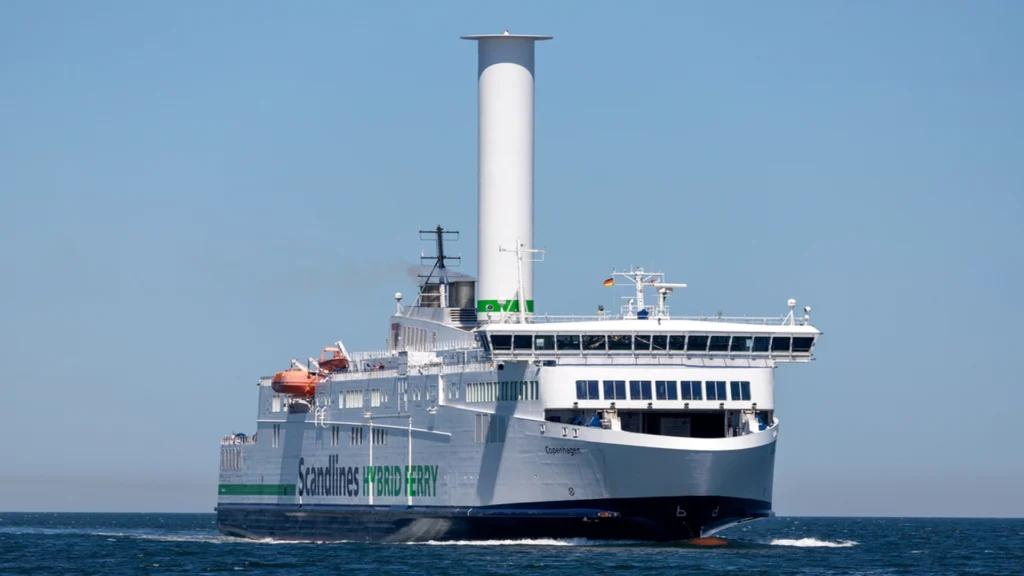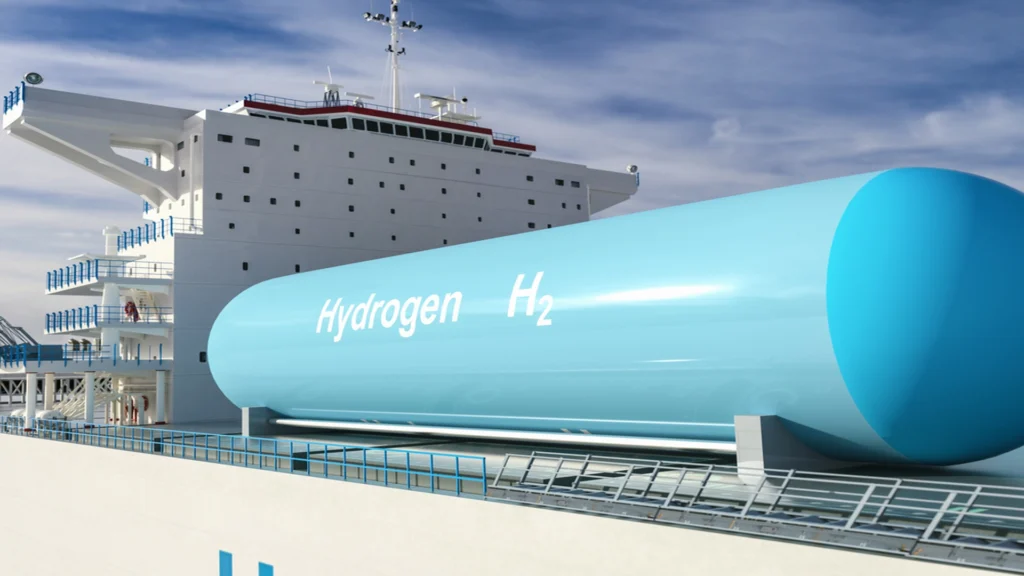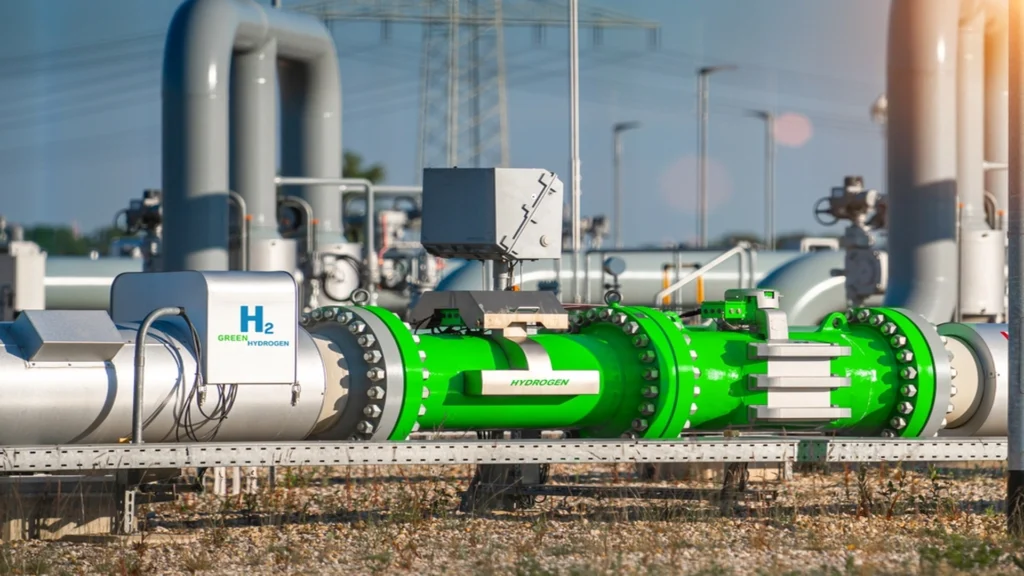Table of Contents
- Technical-economic context of shipping
- Renewable energy technologies
- Photovoltaic Integration: High Efficiency Marine PV Systems
- Green Hydrogen: Production, storage and conversion
- Advanced biofuels and synthetic fuels
- Hybrid propulsion systems: Integration and optimization
- On-board energy storage systems
- Economic and technical analysis
- Technological challenges and obstacles to implementation
- International standards and certifications
- Technology trends
- Conclusions
- References
The energy transformation of the maritime sector represents one of the most complex and critical challenges in the global fight against climate change. With shipping contributing approximately 2.1% of global CO₂ emissions and handling more than 90% of international trade, renewable energy integration emerges as an imperative necessity rather than a strategic option.
This technical analysis examines the emerging technologies, hybrid propulsion paradigms and implementation methodologies that are redefining sustainability in the contemporary marine industry.
Technical-economic context of shipping
Quantitative analysis of the naval carbon footprint
The international shipping sector operates as the second largest sectoral emitter of CO₂ after electricity generation, with a contribution exceeding 25% of global emissions related to freight transport.
The International Maritime Organization (IMO) establishes that annual emissions from the sector reach approximately 1,076 million tons of CO₂ equivalent, projecting an increase of 50-250% by 2050 under conventional economic growth scenarios.
The specific energy intensity of shipping, measured in grams of CO₂ per tonne-kilometer, varies significantly depending on the type of vessel. Bulk carriers have intensities of 10-40 g CO₂/ton-km, while container ships reach ranges of 15-50 g CO₂/ton-km, depending on the capacity utilization factor and operational conditions.
Regulatory imperative and decarbonization frameworks
The International Energy Agency (IEA) states in its 2023 report the critical need to implement energy efficiency improvements of 4% per year to achieve net zero emissions in the maritime sector by 2030.
This objective requires a systemic transformation that involves not only the adoption of alternative propulsion technologies, but also route optimization, improved hull designs and the implementation of intelligent energy management systems.
The International Regulatory Framework includes the IMO’s Initial GHG Emissions Reduction Strategy, which sets targets of 40% reduction in carbon intensity by 2030 and 50% reduction in total emissions by 2050, compared to 2008 levels.
Renewable energy technologies
Wind Propulsion Systems: Advanced Methodologies
Flettner rotors and Magnus technology: Flettner rotors, based on the Magnus effect, represent a significant innovation in offshore wind propulsion. These vertical rotating cylinders generate propulsive force perpendicular to the apparent wind, with lift coefficients that can reach values of 4-10, compared to 1.5-2.0 for conventional sails.
The energy efficiency of Flettner rotors is calculated by the equation:
Propulsive Power = 0.5 × ρ × V² × A × CL
Where ρ is the air density, V the apparent wind speed, A the effective swept area and CL the Magnus lift coefficient.
Recent studies show that a 30-meter Flettner four-rotor system can provide between 1.5-3.0 MW of propulsive power in 10-15 m/s wind conditions, reducing fuel consumption by 15-25% on typical Atlantic routes.
Rigid sails and adaptive control systems: New-generation rigid sails incorporate computationally optimized airfoils with automatic trimming capabilities through adaptive control systems based on artificial intelligence algorithms. These systems can adjust angle of attack, airfoil curvature and flap settings in real time, maximizing propulsive efficiency according to prevailing weather conditions.
The usable power is determined by CFD (Computational Fluid Dynamics) analysis that considers:
- Pressure distribution on windward and leeward surfaces.
- Interference effects between multiple sails
- Aerodynamic interaction with the ship’s superstructure
- Optimization of lift/drag ratio (L/D ratio)

Photovoltaic Integration: High Efficiency Marine PV Systems
Solar cell technologies for marine applications
Marine PV systems face unique challenges related to salt corrosion, dynamic movements and space constraints. High efficiency monocrystalline silicon cell technologies (>22%) and tandem perovskite-silicon cells (>30% theoretical efficiency) emerge as promising solutions.
The PV power installable on a typical vessel is calculated considering:
P_PV = η_cell × η_system × A_available × G_incident × PR
Where η_cell is the cell efficiency, η_system is the system efficiency, A_available is the available area, G_incident is the incident solar irradiance and PR is the Performance Ratio.
For a 400-meter container ship, the area available for photovoltaic installation can reach 8,000-12,000 m², generating peak power of 1.5-3.0 MWp, with annual generation of 2,000-4,000 MWh on equatorial routes.
Solar tracking systems and floating structures
Dual-axis solar tracking systems can increase PV generation by 25-35% compared to fixed installations. However, implementation in marine environments requires special considerations of gyroscopic stabilization and structural resistance to dynamic loads.
Floating photovoltaic structures represent an innovative alternative for ships in port or in low-speed operations, allowing the deployment of floating solar arrays connected by flexible umbilical cables.
Green Hydrogen: Production, storage and conversion
On-board electrolysis and In-Situ production
The production of green hydrogen by onboard electrolysis using renewable energy (wind-solar hybrid) represents an advanced energy integration strategy. New generation PEM (Proton Exchange Membrane) electrolyzers achieve efficiencies of 80-85% and power densities above 2 A/cm².
The measurement of the electrolysis system is based on the energy balance:
H₂_production = (P_renewable × η_electrolyzer × t_operation) / HHV_H₂
Where P_renewable is the available renewable power, η_electrolyzer the electrolyzer efficiency, t_operation the operation time and HHV_H₂ the gross calorific value of hydrogen (39.4 kWh/kg).
An integrated system of 5 MW of renewable capacity can produce approximately 40-60 kg/h of green hydrogen, enough to power fuel cells of 2-3 MW of continuous output.
Author’s note: The original formula is left so as not to affect the calculation when it is used.
Cryogenic and compressed storage technologies
Onboard hydrogen storage presents significant technical challenges related to volumetric energy density.
Cryogenic liquid hydrogen (-253°C) reaches densities of 70.8 kg/m³, while hydrogen compressed at 700 bar has densities of 42 kg/m³.
Cryogenic storage systems require multilayer thermal insulation with typical boil-off losses of 0.2-0.5% per day. Advanced insulation materials, such as silica aerogels and multilayer vacuum systems, can reduce these losses to 0.1-0.2% per day.
Metallic hydrogen storage alloys, such as LaNi₅ and TiFe, offer higher volumetric densities (100-150 kg H₂/m³) but require active thermal management for absorption/desorption processes.

High power marine fuel cells
New-generation marine PEM fuel cells incorporate platinum-free catalysts and high-temperature proton conduction membranes, achieving power densities of 1-1.5 kW/kg and efficiencies of 55-65%.
Fuel cell systems for marine propulsion require series-parallel configurations to achieve power outputs of 5-20 MW, with integrated thermal management systems that harness waste heat for space heating and auxiliary processes.
Advanced biofuels and synthetic fuels
Third-generation biofuels, derived from marine algae and photosynthetic microorganisms, have potential for marine applications due to their high energy density (35-40 MJ/kg) and compatibility with existing marine diesel engines.
The cultivation processes in photosynthetic bioreactors can reach biomass productivities of 50-100 g/m²/day, with lipid contents of 40-60%. Thermochemical conversion by fast pyrolysis or hydrothermal liquefaction can produce bio-oils with properties similar to conventional marine fuel.
Synthetic fuels (E-fuels)
Synthetic fuels produced by Power-to-Liquid (PtL) processes (Power-to-Liquid Process) using captured CO₂ and green hydrogen represent a carbon-neutral fuel solution. The modified Fischer-Tropsch process can produce synthetic fuels with cetane numbers above 60 and sulfur contents below 10 ppm.
The overall efficiency of the PtL process, from renewable energy to synthetic fuel, reaches 45-55%, considering losses in electrolysis, CO₂ capture and chemical synthesis.
Hybrid propulsion systems: Integration and optimization
Multi-modal hybrid propulsion architectures
Hybrid propulsion systems combine multiple energy sources through intelligent integration architectures. Series configurations allow independent operation of generators and propulsion motors, while parallel configurations facilitate the direct combination of power.
Energy management strategies are based on optimization algorithms that consider:
- Instantaneous efficiency of each energy source
- State of charge of storage systems
- Operational conditions (speed, heading, weather conditions)
- Port environmental and regulatory constraints
On-board energy storage systems
Marine lithium-ion batteries
Lithium-ion batteries for marine applications require marine safety specifications, including thermal management systems, short-circuit protection and vibration resistance. Lithium-phosphate-ferro-phosphate (LFP) technologies offer higher thermal safety, while nickel-manganese-cobalt (NMC) technologies provide higher energy density (250-300 Wh/kg).
The marine battery systems incorporate modular architectures with capacities from 1-20 MWh, allowing zero emission operation in environmentally sensitive port areas.
Supercapacitors and hybrid storage
Graphene and activated carbon supercapacitors provide higher power densities (10-100 kW/kg) for applications requiring peak energy demand. Hybrid battery-supercapacitor systems optimize both energy density and dynamic responsiveness.

Economic and technical analysis
Investment and operating costs (CAPEX/OPEX)
The economic analysis of marine renewable technologies must consider initial investment costs (CAPEX), operational costs (OPEX) and fuel savings over the life of the system.
For wind systems (Flettner rotors):
- CAPEX: 1,500-2,500 USD/kW installed
- OPEX: 2-4% of annual CAPEX
- Payback period: 8-12 years
Profitability and NPV metrics
The Net Present Value (NPV) of marine renewable integration projects is calculated considering:
NPV = Σ (Fuel_Savings_t – OPEX_t) /(1+r) ^t – Initial_capEX
Where fuel savings depend on the price of bunker (400-800 USD/ton) and the consumption reduction achieved (10-40% depending on technology).
Projects with positive NPV typically require fuel prices above USD 500/ton and renewable utilization factors above 30%.
Technological challenges and obstacles to implementation
Retrofitting existing vessels presents structural, electrical and control integration challenges. Renewable systems must be integrated with existing propulsion plants without compromising operational safety or ship stability.
Structural modifications may affect transverse and longitudinal stability, requiring stability recalculations and possible ballast modifications. Electrical systems must incorporate grid-connected inverters and protection systems compatible with international naval standards.
International standards and certifications
Marine renewable technologies must comply with IMO regulations, ship classification societies (ABS, DNV, Lloyd’s Register) and national port regulations. Certification processes can take 2-4 years and represent additional costs of 10-20% over the technology investment.
Technology trends
Emerging technologies under development
Emerging technologies include rigid sails with shape memory materials, high altitude wind capture systems (kite-power), compact fusion reactors for marine applications and magneto-hydrodynamic propulsion systems.
Advanced materials, such as carbon fiber composites with nanotubes and shape memory alloys, promise to reduce structural weights and improve energy harvesting efficiencies.
Smart digitization and optimization
Artificial intelligence and machine learning systems enable real-time optimization of hybrid energy configurations. Predictive algorithms use weather data, maritime traffic patterns and fuel prices to optimize routes and energy configurations.
Digital twins of hybrid vessels facilitate predictive simulation of energy performance and optimization of maintenance cycles.
Conclusions
The integration of renewable energies in shipping represents an inevitable and essential technological transformation to achieve the sector’s decarbonization objectives. The technologies analyzed demonstrate technical feasibility and, under appropriate economic conditions, commercial profitability.
Strategic recommendations include:
- Gradual and modular implementation: Start with renewable auxiliary systems before addressing main propulsion.
- Port infrastructure development: Facilitate electric cargo and alternative fuel supply.
- Public-private collaboration: Establish regulatory and financial incentives to accelerate adoption.
- Continued research: Maintain investment in R&D for next generation technologies.
The maritime industry is at a tipping point where sustainability represents not only an environmental responsibility, but a strategic competitive advantage critical to long-term commercial viability.
The success of this energy transition will require international coordination, continuous technological innovation and regulatory frameworks that encourage the adoption of renewable solutions while maintaining the economic competitiveness of the global maritime sector.
References
- https://www.nridigital.com/ship-technology-global/
- https://projects.research-and innovation.ec.europa.eu/en/horizon-magazine/winds-change-new-tech-steering-commercial-shipping-towards-more-sustainable-future
- https://maritime-executive.com/editorials/sailing-cargo-ships-are-making-a-genuine-comeback

